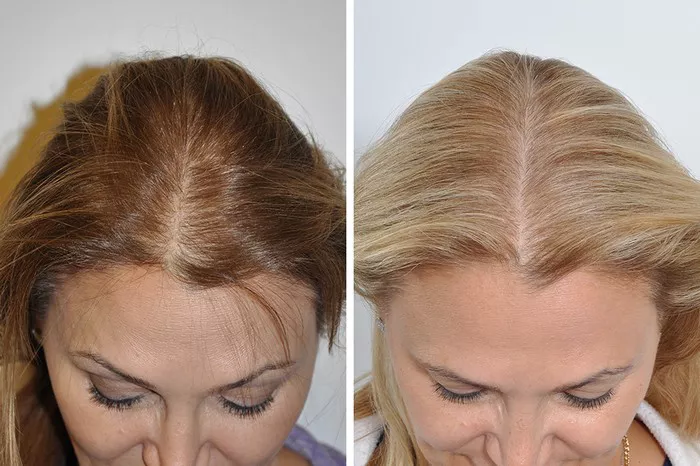Hair transplants have become a popular solution for individuals struggling with hair loss. While many people experience successful results, there are instances where hair transplants can fail. Understanding the reasons behind these failures, the factors that influence the outcome, and how to minimize risks is crucial for anyone considering this procedure. In this comprehensive guide, we will explore the potential for failure in hair transplants, the factors contributing to unsuccessful outcomes, and how to ensure the best possible results.
What is a Hair Transplant?
Overview of the Procedure
A hair transplant is a surgical procedure that involves moving hair follicles from a donor site (usually the back or sides of the head) to areas experiencing thinning or baldness. There are two primary techniques:
Follicular Unit Transplantation (FUT): Involves removing a strip of scalp and dissecting it into individual follicular units.
Follicular Unit Extraction (FUE): Involves harvesting individual hair follicles directly from the scalp using a specialized tool.
Both methods aim to restore a natural-looking hairline and improve hair density.
Common Reasons for Hair Transplant Failure
1. Poor Candidate Selection
Not everyone is a suitable candidate for hair transplants. Factors that may indicate unsuitability include:
Age: Younger individuals may not have stable hair loss patterns, making it difficult to predict future hair loss.
Extent of Hair Loss: Individuals with advanced baldness may lack sufficient donor hair for a successful transplant.
Underlying Medical Conditions: Conditions like alopecia areata, autoimmune disorders, or hormonal imbalances can affect hair growth and transplant success.
2. Inexperienced Surgeon
The skill and experience of the surgeon play a significant role in the success of a hair transplant. Poor surgical technique can lead to:
Incorrect Angling of Hair Follicles: Hair follicles must be placed at the right angle for a natural appearance. Incorrect angling can lead to an unnatural look.
Overharvesting: Removing too many follicles can result in visible scarring and insufficient donor hair.
3. Inadequate Post-Operative Care
Proper aftercare is essential for successful hair transplant results. Failure to follow post-operative instructions can lead to complications, such as:
Infection: Poor hygiene or improper wound care can result in infections that compromise the healing process.
Poor Healing: Not following guidelines regarding physical activity, hair washing, and sun exposure can hinder recovery and lead to poor hair growth.
4. Unrealistic Expectations
Patients with unrealistic expectations about the results of their hair transplant may be disappointed, leading to perceptions of failure. It’s essential to have a clear understanding of what a hair transplant can and cannot achieve.
5. Hair Follicle Shock Loss
After a transplant, some patients experience a temporary shedding of transplanted hair known as shock loss. This is typically a normal part of the healing process, but if too many follicles are affected, it can impact the overall success.
6. Complications During Surgery
Surgical complications can arise, affecting the outcome of the procedure. These may include:
Excessive Bleeding: May compromise the viability of the transplanted follicles.
Anesthesia Reactions: Adverse reactions to anesthesia can lead to complications during surgery.
7. Genetic Factors and Ongoing Hair Loss
Even after a successful transplant, genetic predisposition to hair loss can lead to further thinning of non-transplanted hair. This can create an uneven appearance and give the impression of failure.
Signs of a Failed Hair Transplant
Identifying the signs of a failed hair transplant early can help address issues before they worsen. Common indicators include:
Poor Hair Growth: If the transplanted area does not show significant hair growth within 6-12 months.
Visible Scarring: Excessive scarring in the donor area or recipient site.
Uneven Hairline: An unnatural or irregular hairline that does not blend with existing hair.
Minimizing the Risk of Failure
1. Choose the Right Surgeon
Research Credentials: Look for board-certified surgeons with extensive experience in hair transplants.
Read Reviews and Testimonials: Check previous patient experiences to gauge satisfaction and results.
2. Comprehensive Consultation
Discuss Medical History: Be open about your medical history and hair loss pattern with your surgeon.
Set Realistic Goals: Have an honest conversation about what can be achieved through the procedure.
3. Follow Pre- and Post-Operative Instructions
Pre-Operative Guidelines: Follow any dietary or medication recommendations before surgery.
Post-Operative Care: Adhere to all post-operative instructions regarding hair care, hygiene, and activity restrictions.
4. Consider Preventative Treatments
Medications: Discuss the potential use of medications like minoxidil or finasteride to prevent ongoing hair loss.
Laser Therapy: Some patients find benefits in low-level laser therapy to stimulate hair growth.
Conclusion
While hair transplants can offer transformative results for those experiencing hair loss, there is a possibility of failure due to various factors. Understanding these risks, selecting a qualified surgeon, and following proper care instructions can significantly enhance the chances of success. By being informed and setting realistic expectations, patients can navigate the journey of hair restoration with confidence, ultimately achieving the desired results. If you’re considering a hair transplant, weigh the potential risks and rewards carefully, and consult with professionals to ensure the best possible outcome.
Related topics:
- How to Sleep After a Hair Transplant: Essential Tips
- What to Expect 3 Months After a Hair Transplant: A Full Guide
- Does a Hair Transplant Work on a Bald Head? A Full Guide


